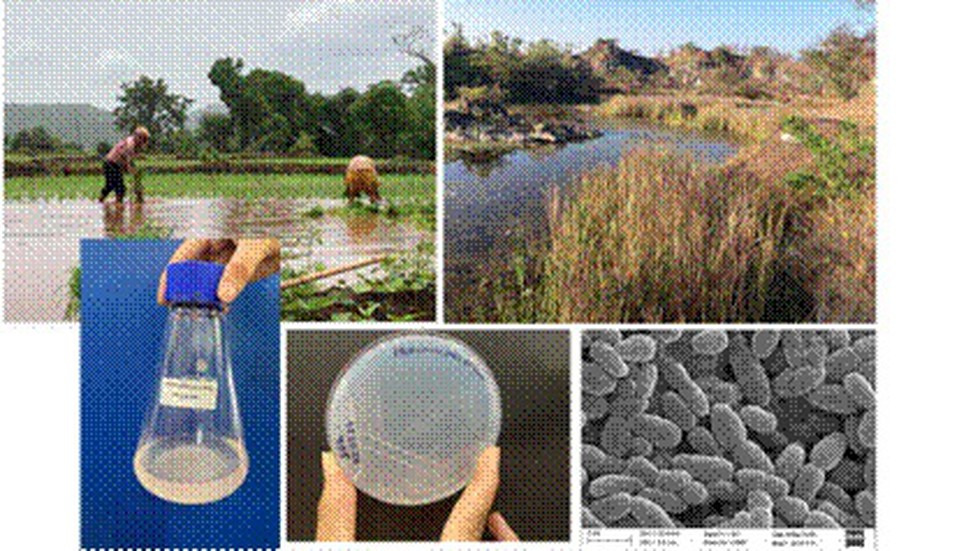India has recently reported its first cultures of indigenous natural methane mitigating agents from rice fields and wetlands, primarily from Western India. These cultures are significant in addressing climate challenges related to global warming and climate change. Methane, the second most important greenhouse gas, has a global warming potential 26 times greater than carbon dioxide.
Methane Sources and Mitigation
- Methane Sources: Methane is produced by methanogens in wetlands, ruminants, rice fields, and landfills.
- Methane Mitigation: Methanotrophs, or methane-oxidizing bacteria, mitigate methane by oxidizing it, using oxygen, and producing CO₂ and H₂O. These bacteria are present in environments where methane and oxygen coexist, such as wetlands, rice fields, ponds, and other water bodies.
Discovery and Description
- Researcher: Dr. Monali Rahalkar from the MACS Agharkar Research Institute led the study.
- Cultures Isolated: India’s first cultures of methanotrophs were isolated from rice fields and wetlands. The novel methanotroph described was named Methylocucumis oryzae.
- Characteristics: Methylocucumis oryzae is characterized by its oval, elongated shape, resembling a cucumber, hence the name ‘methane eating cucumbers’.
Recent Findings
- Stone Quarry Discovery: Methylocucumis oryzae was found in a stone quarry in Pune, located on Vetal Tekdi or ARAI hill, which has unique flora and fauna.
- Abundance and Cycle: The team documented the abundance of methanotrophs in the quarry’s water, indicating an active methane cycle in this habitat.
Unique Features
- Phylogenetic Uniqueness: Methylocucumis oryzae remains phylogenetically unique with no other strains reported globally.
- Size and Growth Conditions: The bacterium is unusually large (3-6 µm) and strictly mesophilic, unable to grow above 37ºC, unlike other methanotrophs.
Additional Observations
- Colony Characteristics: It forms light pale pink colonies, and its genome suggests a carotenoid pathway.
- Agricultural Benefits: The methanotroph promotes rice plant growth, inducing early flowering and increased grain yield. It was tested on the local high-yielding rice variety Indrayani.
Constraints and Future Research
- Growth Limitations: Slow growth of Methylocucumis oryzae limits large-scale cultivation for mitigation and biotechnological applications.
- Publication: Insights into Methylocucumis oryzae were published in the Indian Journal of Microbiology, with earlier reports in Microbial Ecology, Antonie van Leeuwenhoek, Frontiers in Microbiology, and International Microbiology.
Conclusion
The discovery of Methylocucumis oryzae is crucial for understanding and addressing climate challenges. Further research and improvements in cultivation conditions may enhance its application in climate mitigation.
Multiple Choice Questions (MCQs):
- What is the global warming potential of methane compared to carbon dioxide?
- A) 10 times
- B) 20 times
- C) 26 times
- D) 30 times
- What role do methanotrophs play in the environment?
- A) Produce methane
- B) Oxidize methane
- C) Absorb carbon dioxide
- D) Decompose organic matter
- Which novel methanotroph was described by Dr. Monali Rahalkar’s team?
- A) Methylocystis oryzae
- B) Methylobacterium oryzae
- C) Methylocucumis oryzae
- D) Methylosinus oryzae
- Where was Methylocucumis oryzae recently found aside from rice fields and wetlands?
- A) A landfill in Delhi
- B) A stone quarry in Pune
- C) A river in Mumbai
- D) A desert in Rajasthan
- What is a unique feature of Methylocucumis oryzae compared to other methanotrophs?
- A) It can grow at temperatures above 40ºC
- B) It has a smaller size compared to other bacteria
- C) It has a strict mesophilic nature and cannot grow above 37ºC
- D) It produces methane as a byproduct
